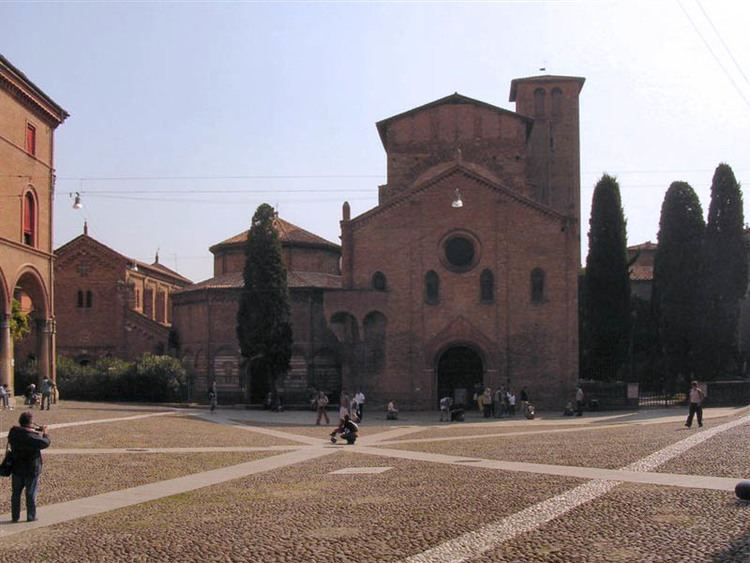 | ||
Campane di santo stefano bologna
The basilica of Santo Stefano (Italian: Basilica di Santo Stefano) encompasses a complex of religious edifices in the city of Bologna, Italy. Located on Piazza Santo Stefano, it is locally known as Sette Chiese ("Seven Churches") and Santa Gerusalemme ("Holy Jerusalem").
Contents
History
According to tradition Saint Petronius, a bishop of the city during the 5th century, built the basilica over a temple of the goddess Isis. The saint wished to have a building that recalled the Church of the Holy Sepulchre in Jerusalem.
The different parts of the complex include:
Pilate's Courtyard recalls the lithostrotos, where Jesus was condemned; it leads to the Church of the Holy Sepulchre. In the center, a basin called the "Catino di Pilato", a Lombard work from 737-744, bears the following inscription:
UMILIB(US) VOTA SUSCIPE D(OMI)NE D(OM)N(ORUM) N(OST)R(ORUM) LIUTPRAN(TE) ILPRAN(TE) REGIB(US) ET D(OM)N(O) BARBATU EPISC(OPO) S(AN)C(TE) HECCL(ESIE) B(O)N(ONIEN)S(I)S. HIC I(N) H(ONOREM) R(ELIGIOSI) SUA PRAECEPTA OBTULERUNT, UNDE HUNC VAS IMPLEATUR IN CENAM D(OMI)NI SALVAT(ORI)S, ET SI QUA MUN(ER)A C(UISQUAM) MINUERIT, D(EU)S REQ(UIRET)[3]
Under the portico at the center of a window on a column, a 14th-century sculpted rooster, called the Rooster of St Peter, recalls the biblical story of Saint Peter's denial.
Scholarly interest
The focus of scholarly discussion has been for many years the supposed similarity between the so-called "New Jerusalem" rebuilt here, according to a vita written in 1180, by Saint Petronius in the 5th century, and the largely lost 4th-century complex erected by Constantine the Great at the purported site of the crucifixion and resurrection of Jesus. Unfortunately the archaeological evidence from Bologna dates primarily to the 11th and 12th centuries, leaving the question about an earlier date still unanswered (at least until 1981). On the other hand, archaeology has meanwhile delivered many answers regarding the Constantinian church complex from Jerusalem, therefore the main interest presented by the 12th-century parts of the Church of Santo Stefano might much rather be their similarity to the almost contemporary Crusader Church of the Holy Sepulchre from Jerusalem, of which not all parts are preserved.
